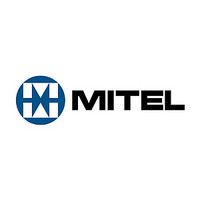vp520s Mitel, vp520s Datasheet - Page 8

vp520s
Manufacturer Part Number
vp520s
Description
Pal/ntsc To Cif/qcif Converter
Manufacturer
Mitel
Datasheet
1.VP520S.pdf
(16 pages)
VP520S
QCIF -> 625 line
HORIZONTAL FILTERS
decimated down to half the horizontal sampling rate of the
luminance data, before it is applied to the VP520S. When
producing CIF data both luminance and chrominance are then
both decimated by two, when producing QCIF data they are
both decimated by four.
filters and 16 tap QCIF filters give more than adequate
performance in the decimation mode. In the interpolation
mode these same simulations have shown the need for longer
filters in the luminance channel. The hardware thus supports
a 12 tap filter when interpolating luminance from CIF inputs,
but only 8 taps are provided for each chrominance channel.
Even longer filters are needed when QCIF data must be
interpolated, and the luminance channel is provided with 24
taps, and each chrominance channel with 16 taps.
double the input rate, but every other input will be conceptually
zero. Similarly when interpolating by four there are three
zero's between every data point, even though the output rate
is four times the input rate. Thus during any clock period only
one half or one quarter of the coefficients are actually in use,
and the computational burden is no greater than when doing
the equivalent decimation.
cycle, it is convenient to refer to two smaller sets of coeffi-
cients. Thus the 12 tap CIF luminance filter, for example, can
be considered to have two sets of 6 coefficients, and the 24 tap
QCIF luminance filter to have four sets of 6 coefficients. The
addressing in the coefficient RAMs uses this concept of sets.
VERTICAL FILTERS
spatial relationship shown in Figure 7, and QCIF with the
spatial relationship shown in Figure 8. Original PAL or NTSC
video contains lines of coincident luminance and chromi-
nance, but the CIF specification requires that the decimated
chrominance information is shifted such that it lies mid way
between two luminance lines. This is achieved by choosing
the centre outputs from the filter which best fit the require-
ments. The filter outputs actually used by the device are
shown by the arrows in Figures 7 and 8, and are optimal when
the even field provides the original video.
discarded prior to the VP520S, and thus no further decimation
occurs when producing CIF luminance from PAL ( NTSC in
8
Simulations with actual video have shown that 8 tap CIF
Note that when interpolating by two the output rate is
The vertical filters are designed to produce CIF with the
It is assumed that one of the interlaced fields has been
Since all the coefficients are not in use during any clock
Chrominance data is assumed to have already been
112-118
119-125
126-132
133-139
14-20
21-27
28-34
35-41
42-48
49-55
7-13
0-6
10, odd field
1, even field
2, even field
3, even field
4, even field
7, odd field
8, odd field
9, odd field
1, odd field
2, odd field
3, odd field
4, odd field
10
11
12
0
1
2
3
4
5
6
7
8
9
PAL LINES
Fig 7 : CIF Spatial Relationships
EVEN
ODD
10
11
0
1
2
3
4
5
6
7
8
9
10
11
0
1
2
3
4
5
6
7
8
9
CIF LINES
CHROM
LUM
10
0
2
4
6
8
10
0
1
2
3
4
5
6
7
8
9
NTSC LINES
EVEN
ODD
REPEAT
REPEAT
REPEAT
0
1
2
3
4
5
6
7
8
9












